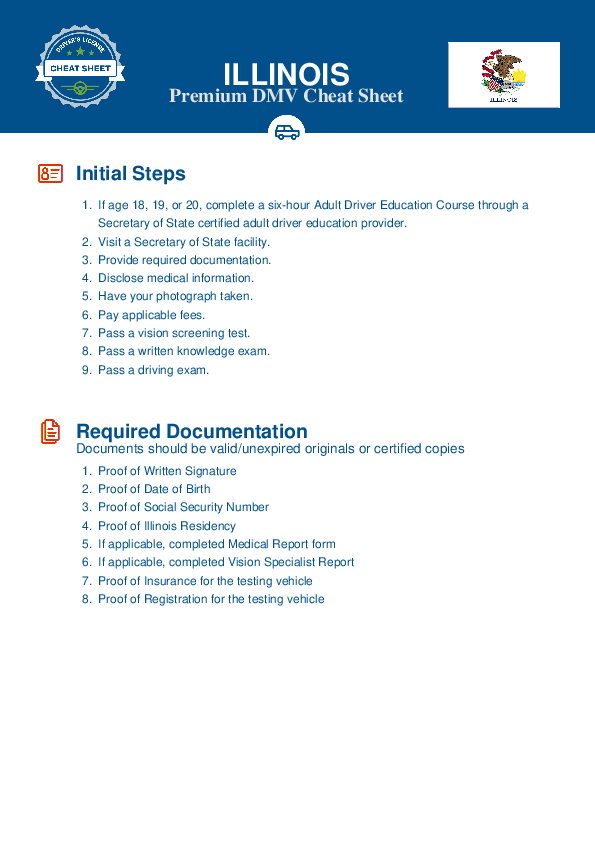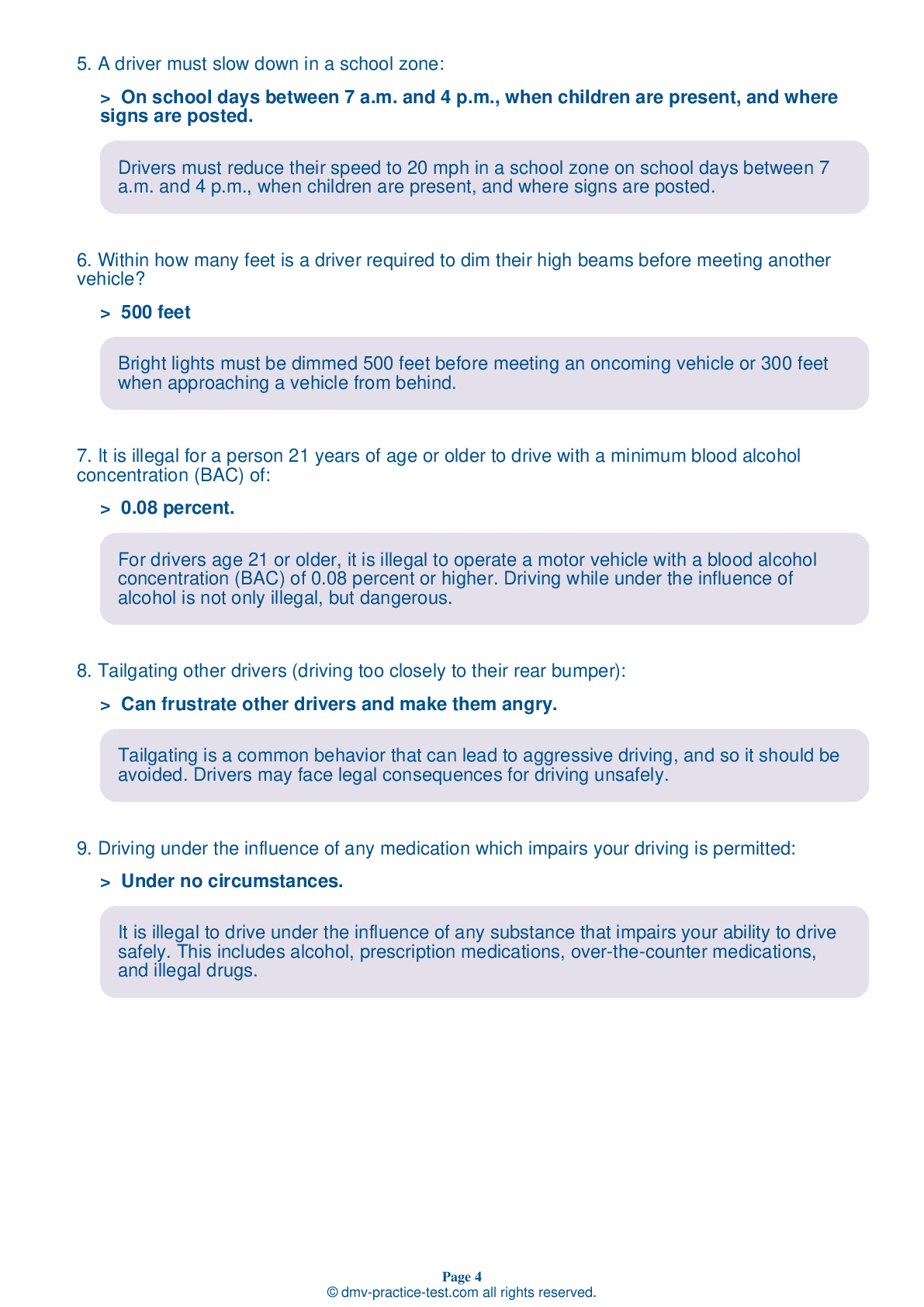FREE Illinois DMV Practice Test #11
For January 2025, this set of Illinois DMV practise tests has been updated. It includes questions based on the most important traffic signs and rules for 2025 from the Illinois Driver Handbook. To study for the DMV driving permit test and driver's licence exam, use actual questions that are very similar (often identical!) to the DMV driving permit test and driver's licence exam.
Each question on the practise exam has a tip and explanation to help you recall the ideas. Questions about traffic rules, traffic signs, and driving statutes, as well as information from the Driver Handbook, will be included in the written portion of the official DMV test.
You must properly answer 38 of the 35 questions to receive a passing mark. To help you prepare for your Illinois instruction permit or driver's licence, take our DMV practise test.
The DMV exam is offered in a variety of languages.
Using any form of testing help will result in an automatic fail, and the DMV may take further action against your driver's licence, so avoid it.
1 . When passing another vehicle, it is safe to return to your lane if you:
Before returning to your original lane after passing, you must make sure you are not dangerously close to the vehicle you have just passed. When you can see both of the vehicle's headlights in your rearview mirror, you may have enough room to return to the lane.
2 . Use your headlights on rainy, snowy, or foggy days:
On rainy, snowy, or foggy days, it may be difficult for other drivers to see your vehicle. Under these conditions, headlights make your vehicle easier to see. If the weather requires you to turn on your windshield wipers, you must also turn on your low beam headlights.
3 . You are driving on the freeway behind a large truck. You should drive:
It is necessary to follow farther behind a large truck than you would if following a passenger vehicle because trucks have larger blind spots.
4 . This road sign means:
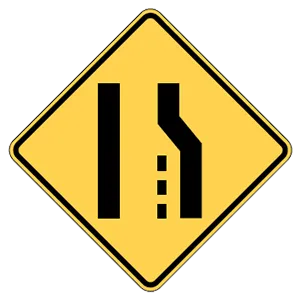
Warning signs provide notice to road users of a situation that might not be readily apparent and are usually yellow with black markings. This sign alerts drivers to the right lane ending and tells them to prepare for potential merging traffic.
5 . When you see this sign, you should:

Warning signs alert drivers to upcoming hazards and are usually yellow with black markings. This sign warns drivers about potential traffic merging into their lane from the right.
6 . This sign means:
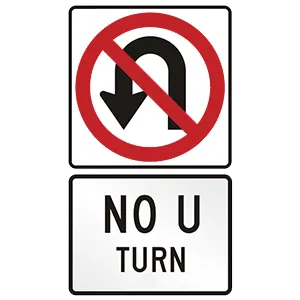
This sign indicates that you may not make a U-turn. You cannot turn around to go in the opposite direction at an intersection where this sign is posted.
7 . If a driver is arrested and refuses to submit to testing, driving privileges will be suspended for only three months.
If a driver refuses to submit to chemical testing, driving privileges will be suspended for one year. If a driver under age 21 refuses to submit to testing, their driving privileges will be suspended for 6 months.
8 . You drive defensively when you:
You are driving defensively when you are looking down the road for potential hazards. Constantly staring at the road directly in front of your vehicle is dangerous. As you scan ahead, be alert to vehicles around you.
9 . A parent or legal guardian may request that the driver license of a minor be cancelled at any time prior to age 18.
A 16- or 17-year-old driver must have the written consent of a parent/legal guardian to obtain a driver license. The parent/legal guardian who gave initial consent may cancel the minor’s license at any time, for any reason, until the driver turns 18.
10 . This sign means:
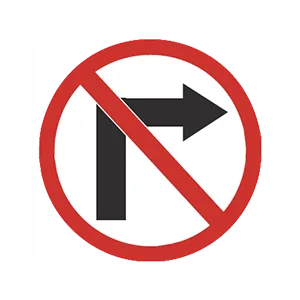
This sign indicates that turns in the direction of the arrow (in this case, to the right) are prohibited.
11 . A sign with this shape means:

A diamond-shaped yellow sign warns of possible danger ahead. Orange signs, which are mostly diamond-shaped, are used to warn of possible dangers in or near work areas.
12 . What does this road sign mean?
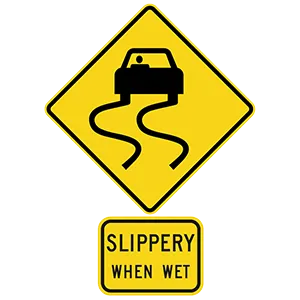
This sign indicates that the road may be slippery when wet. Exercise caution when driving on a slippery road.
Need Car Insurance? No problem!
Compare the best rates in Illinois and find a personalized policy that meets your needs.
1. Are You Currently insured ?
2. Married ?
3. Do you own your Home?
4. Do you have more than 1 car ?
5. Have you or a Family Member Honorably Served in U.S. Military ?
6. Your Name
7. Age
8. Zip code
IMPORTANT REMINDER:Auto Insurance is Mandatory to drive in Illinois. Get covered before you hit the road to avoid any fines.
Ranked by best match
